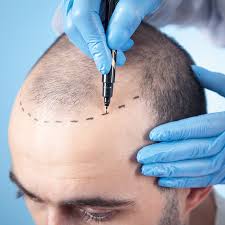While numerous treatments promise to restore thinning hair or slow hair loss, few are as effective or long-lasting as a hair transplant. This article will explore what a hair transplant involves, who might be a good candidate, the different types of procedures available, and what you can expect from the results.
What is a Hair Transplant?
A hair transplant is a surgical procedure that moves hair follicles from one part of the body (usually the back or sides of the scalp) to balding or thinning areas. This technique is primarily used to treat male pattern baldness, but it can also be applied to restore eyebrows, eyelashes, beard hair, and even chest hair. The transplanted hair is typically resistant to the hormones that cause hair loss, meaning it can provide a permanent solution to hair thinning and balding.

Who is a Good Candidate?
Not everyone experiencing hair loss is an ideal candidate for a hair transplant. The best candidates are typically those who have:
- Stable Hair Loss: Candidates should have a stable pattern of hair loss, meaning their hair loss has slowed down or stopped. If hair loss is still progressing rapidly, additional treatments may be needed in the future.
- Sufficient Donor Hair: The success of a hair transplant depends on the availability of healthy hair follicles in the donor area. If the donor area is sparse or thin, it might not be possible to achieve the desired results.
- Good Overall Health: As with any surgical procedure, candidates should be in good overall health. Certain medical conditions or medications may affect the healing process or increase the risk of complications.
Types of Hair Transplant Procedures
There are two main techniques used in hair transplantation: Follicular Unit Transplantation (FUT) and Follicular Unit Extraction (FUE).
- Follicular Unit Transplantation (FUT)
- Procedure: FUT, also known as the "strip method," involves removing a strip of scalp from the donor area, usually at the back of the head. This strip is then dissected into individual follicular units, which are transplanted into the balding areas. The donor site is then sutured closed, leaving a linear scar that is usually hidden by surrounding hair.
- Advantages: FUT can harvest a large number of grafts in a single session, making it suitable for those needing extensive hair restoration.
- Disadvantages: The primary downside is the linear scar left at the donor site, which may be visible if the hair is cut very short.
- Follicular Unit Extraction (FUE)
- Procedure: FUE involves extracting individual hair follicles directly from the donor area using a specialized punch tool. These follicles are then implanted into the balding areas.
- Advantages: FUE leaves minimal scarring since there is no need for stitches. The small, circular scars are usually undetectable, even with short hairstyles. Additionally, FUE allows for a quicker recovery time and less post-operative discomfort.
- Disadvantages: FUE is generally more time-consuming and may require multiple sessions to achieve the desired density.
What to Expect During and After the Procedure
- During the Procedure: Hair transplants are typically performed under local anesthesia, with the procedure lasting anywhere from four to eight hours, depending on the number of grafts being transplanted. Patients are usually awake during the procedure, and some clinics provide entertainment options like watching movies or listening to music to help pass the time.
- Recovery: Post-operative recovery varies depending on the type of procedure. FUT patients may experience more discomfort due to the linear incision, while FUE patients often experience less pain and a quicker recovery. Swelling, redness, and scabbing in the recipient area are common, but these symptoms typically subside within a week or two.
- Results: Initial hair shedding is normal within the first few weeks post-surgery, a phase known as "shock loss." However, new hair growth usually begins within three to four months, with the final results visible around 12 months after the procedure. The transplanted hair will continue to grow naturally, blending seamlessly with the surrounding hair.
Conclusion
A hair transplant can be a life-changing procedure for those struggling with hair loss, offering a permanent and natural-looking solution. However, it is crucial to have realistic expectations and understand that results can vary depending on individual factors such as hair type, extent of hair loss, and the skill of the surgeon. Consulting with a qualified and experienced hair transplant specialist is essential to determine the best approach for achieving the desired outcome.
While the decision to undergo a hair transplant is deeply personal, the potential benefits—restored confidence, improved self-esteem, and a rejuvenated appearance—make it a worthwhile consideration for many.
